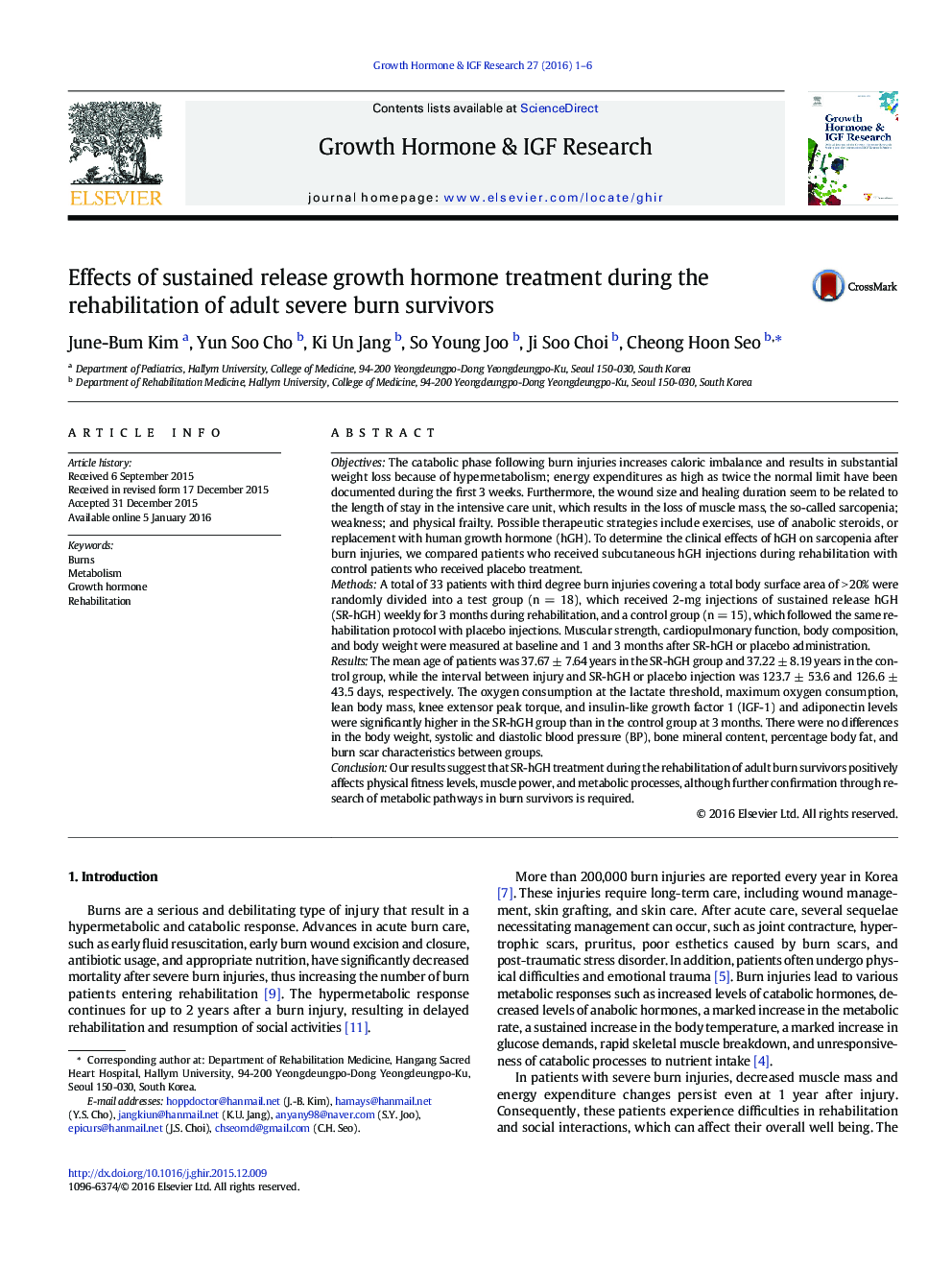| Article ID | Journal | Published Year | Pages | File Type |
|---|---|---|---|---|
| 2802482 | Growth Hormone & IGF Research | 2016 | 6 Pages |
Highlight•We investigated the effects of growth hormone on adult burn patients.•Higher levels of oxygen consumption and lean body mass were checked.•Growth hormone treatment may have a beneficial effect on physical fitness.
ObjectivesThe catabolic phase following burn injuries increases caloric imbalance and results in substantial weight loss because of hypermetabolism; energy expenditures as high as twice the normal limit have been documented during the first 3 weeks. Furthermore, the wound size and healing duration seem to be related to the length of stay in the intensive care unit, which results in the loss of muscle mass, the so-called sarcopenia; weakness; and physical frailty. Possible therapeutic strategies include exercises, use of anabolic steroids, or replacement with human growth hormone (hGH). To determine the clinical effects of hGH on sarcopenia after burn injuries, we compared patients who received subcutaneous hGH injections during rehabilitation with control patients who received placebo treatment.MethodsA total of 33 patients with third degree burn injuries covering a total body surface area of > 20% were randomly divided into a test group (n = 18), which received 2-mg injections of sustained release hGH (SR-hGH) weekly for 3 months during rehabilitation, and a control group (n = 15), which followed the same rehabilitation protocol with placebo injections. Muscular strength, cardiopulmonary function, body composition, and body weight were measured at baseline and 1 and 3 months after SR-hGH or placebo administration.ResultsThe mean age of patients was 37.67 ± 7.64 years in the SR-hGH group and 37.22 ± 8.19 years in the control group, while the interval between injury and SR-hGH or placebo injection was 123.7 ± 53.6 and 126.6 ± 43.5 days, respectively. The oxygen consumption at the lactate threshold, maximum oxygen consumption, lean body mass, knee extensor peak torque, and insulin-like growth factor 1 (IGF-1) and adiponectin levels were significantly higher in the SR-hGH group than in the control group at 3 months. There were no differences in the body weight, systolic and diastolic blood pressure (BP), bone mineral content, percentage body fat, and burn scar characteristics between groups.ConclusionOur results suggest that SR-hGH treatment during the rehabilitation of adult burn survivors positively affects physical fitness levels, muscle power, and metabolic processes, although further confirmation through research of metabolic pathways in burn survivors is required.
